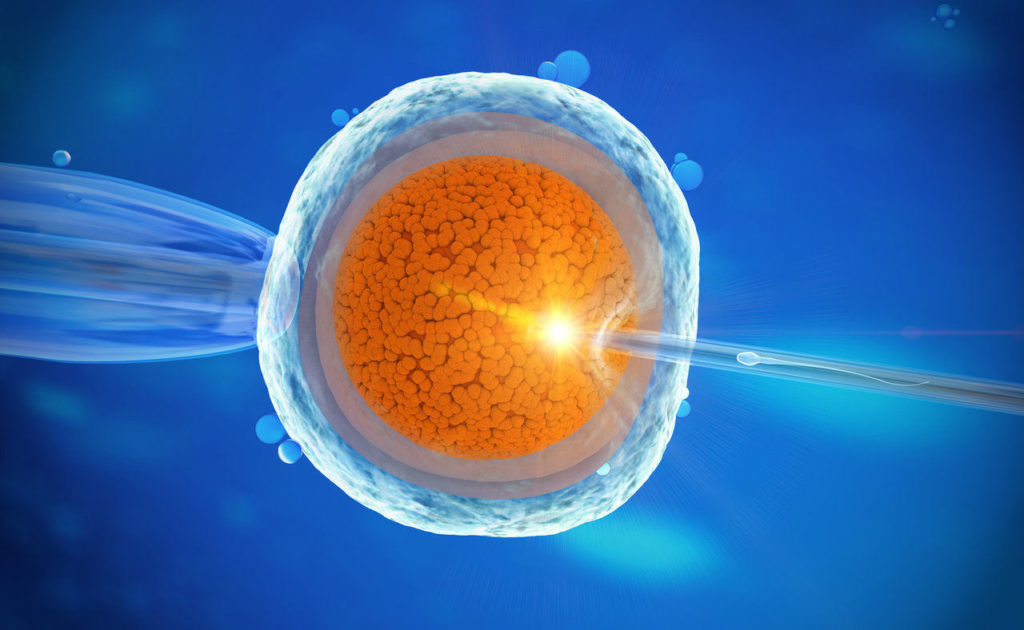If you are trying to conceive naturally, you definitely know that with age a bigger number of mutations start to occur in your genetic material of each of your reproductive cells (eggs and sperm). Statistically speaking, oocyte quality falls rapidly after 35 or even earlier in some cases (for example when you smoke, have undergone surgeries or suffer from immunological diseases). Dr Aleš Sobek from Fertimed, the Czech Republic says: “mutations in cytoplasm (ooplasm, mitochondria) are ten times higher than in nuclei. A decrease in cytoplasmic function starts earlier than the decrease in the quality of genetic material in the egg nucleus”. That is why scientists and doctors look closely at mutations in cytoplasma first. They believe such research can lead to better understanding of the mutation process and help improve the procedure of “rejuvenating” oocytes – cytoplasmic transfer.
What is cytoplasmic transfer?
In short, cytoplasmic transfer is a method of improving egg quality and its function. It is a great solution for patients over 35, with poor egg quality and for those who would like to use their own eggs for IVF procedure. “Before 2000 we were aware only about unknown cytoplasmic factors. Now the biologists know about the significance of mitochondria in fertilization process and early phases of embryo development. We understand more about mitochondrial mutations and their influence on cell reproduction. Low mitochondrial function means low energy for the cell and this, unfortunately, results in flawed or inhibited reproduction,” says Dr Aleš Sobek.
Cytoplasmic transfer – success rate of the procedure
EggDonationFriends: How exactly cytoplasmic transfer is performed?
Dr Aleš Sobek, Fertimed: It is done via ICSI (Intracytoplasmic Sperm Injection). In cytoplasmic transfer 10-15 % of donor cytoplasma is added to the recipent’s egg together with the sperm. The sperm donor cytoplasma is carefully selected by biologists. It contains mitochondria, enzymes and other organelles. Cytoplasma does not contain any information about the donor’s phenotype; it contains only genetic information about energy production.
The added donor cytoplasma improves recipient’s cytoplasma function during fertilization, aids early development stages of an embryo and helps with its implantation. Such a procedure (a simple injection of cytoplasma) from a healthy sperm donor is able to bring back healthy mitochondrial activity and rejuvenate the patient’s oocyte.
EggDonationFriends: Why is it done this way?
Dr Aleš Sobek, Fertimed: This way it is very easy and straighforward. Medical literature says that other method (electrofusion) is not so successful as we could see from the results of our previous research.
EggDonationFriends: How big is the group of patients for whom the cytoplasmic transfer is indicated?
Dr Aleš Sobek, Fertimed: We especially recommend cytoplasmic transfer to patients with low egg quality, low embryo grade, especially for patients over the age of 35, suffering from premature ovarian failure, with history of previous abortions or implantation failures. Cytoplasmic transfer is also helpful for patients with embryo developmental arrest, high fragmentation of embryos, idiopathic infertility and other.
EggDonationFriends: How many patients of your clinic have the indication for this type of treatment? What is your estimate of the number of patients who need this procedure?
Dr Aleš Sobek, Fertimed: We offer cytoplasmic transfer to 30% of our patients. At the moment the cost of the procedure is still considerably high as it is new technology in assisted reproduction. We hope that in the future the cost may become more affordable so more fertility patients will be able to benefit from this method.
EggDonationFriends: What are the treatment results?
Dr Aleš Sobek, Fertimed: Cytoplasmic transfer greatly improves egg quality in about 50% cases of low oocyte quality. Many women who have been recommended egg donation as their only chance to become mothers are now interested in trying this method as their last chance before egg donation.
Cytoplasmic transfer – IVF clinics
At Fertimed, the doctors have 20 years of experience in assisted reproduction and research and have had more than 15 healthy children born thanks to cytomplasmic transfer. During the last 3 years the scientists and doctors have understood the topic better and are able to put this knowledge to practice. Fertimed can now offer cytoplasmic transfer to a wider range of patients. Many of them are glad to have a try to increace the chances to have a child from their own genetic material.





Could you please tell me more about cytoplasmic transfer for Canadian citizens. I am 45 yo, 1 failed IVF; all arrested at day 7, AMH 15.16.
Hi. I m 44 years premature ovarian failure. 4 rounds of IVF, 3 failed ,one successful in 2018. Miscarriage at 12 weeks unknown cause. Aneuploidy test was negative. Given option of donors eggs. I would like to try cytoplasmic transfer in your institution. Have 8 years old conceive naturally
Hi. Can you please recommend an IVF clinic that performs Cytoplasmic Transfer? Are there clinics in Canada or the US that do this? If not which clinic do you recommend?
Thank you.